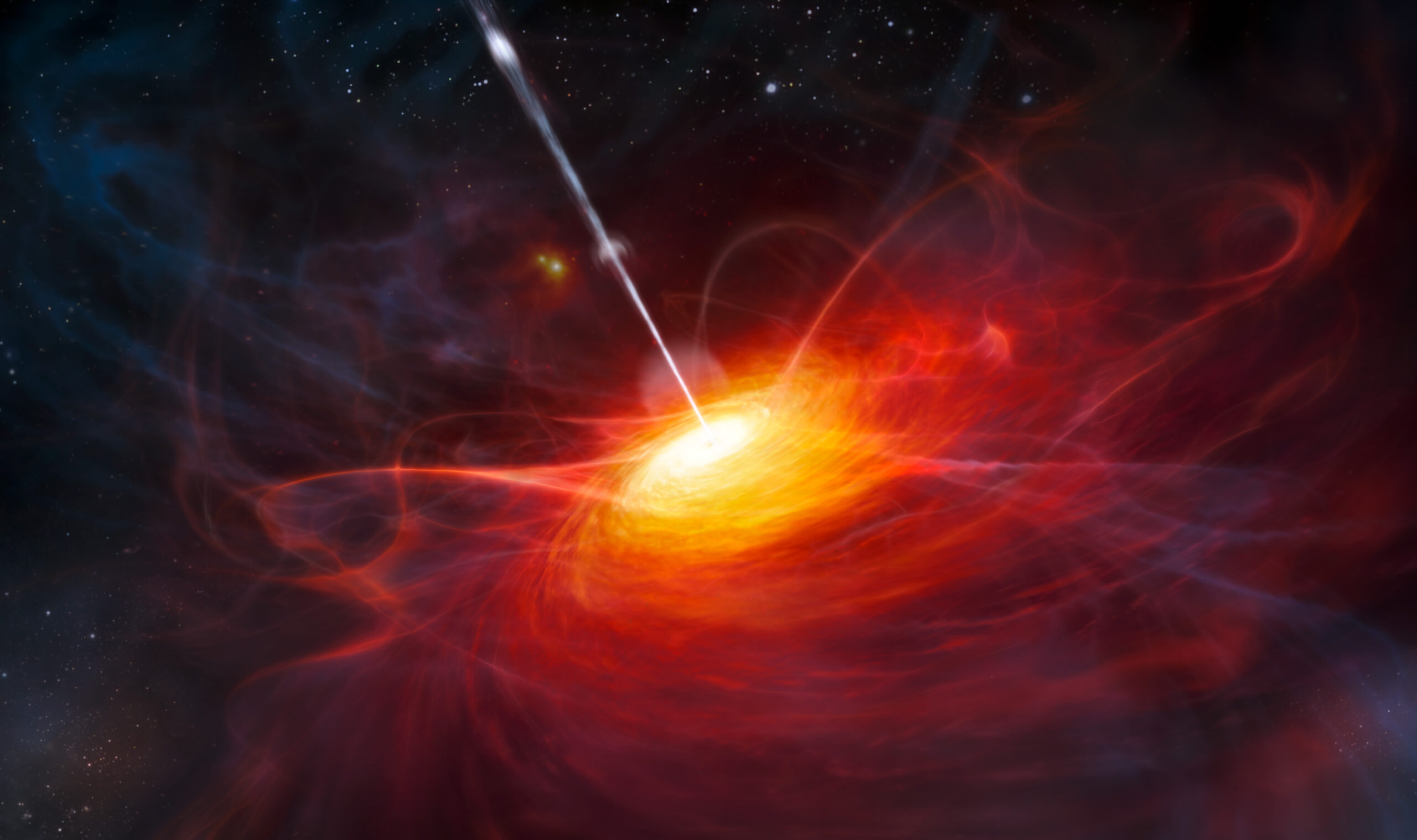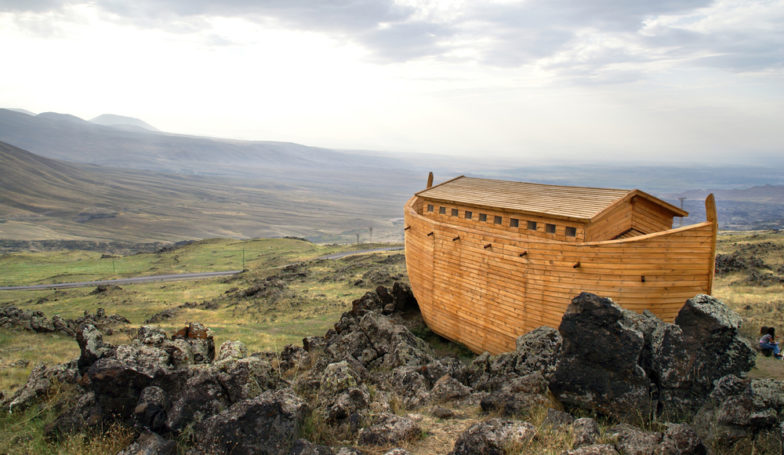Stunted Black Holes Pave Way for Life
Any Southern California resident knows that strong Santa Ana winds are a part of life. It may not come readily to mind, but strong winds elsewhere in the universe are also a part of life. Scientists have learned that strong outflow winds near our galaxy’s supermassive black hole early in cosmic history prevented dangerous radiation and made advanced life possible.
I wrote about some of the design features of black holes a year ago in my article, Black Holes As Evidence of God’s Care, which was published in a peer review journal.1 The entire paper, together with the reviewers’ critiques and my responses to the critiques, are available online.2 Now, a team of 26 astronomers has published a paper in Nature that shows yet more evidence that the universe’s black holes are exquisitely designed to make advanced life on Earth possible.3
Supermassive Black Holes in the Early Universe
Astronomical observations show that bright quasars already existed when the universe was less than a billion years old. A quasar is an extremely bright active galactic nucleus powered by a supermassive black hole (SMBH) that is gravitationally accreting a huge amount of mass. (A supermassive black hole is a black hole with a mass that exceeds one million solar masses.) SMBHs convert from 6–42% of the mass they accrete into energy. For comparison, the Sun’s nuclear furnace converts just 0.07% of the hydrogen it fuses into helium into energy.
The existence of bright quasars during the first billion years of cosmic history coincides with the epoch of aggressive galaxy growth. The growth of galaxies during the early history of the universe should accelerate the growth of the galaxies’ SMBHs and should result in many more bright quasars during the universe’s first billion years than what astronomers actually observe. Thus, the 26 astronomers sought to solve this “missing early bright quasars” problem.
Why So Few Early Bright Quasars?
The team suspected that strong outflow winds generated by the SMBHs likely explained the scarcity of early bright quasars. To test their suspicion, they compared broad absorption line (BAL) features in the spectra of a sample of 30 bright quasars (the XQR-30 survey) spanning the redshift range 5.8–6.6. This range corresponds to when the universe was 800–1,000 million years old, with BAL features in a much larger sample of bright quasars (the Sloan Digital Sky Survey) spanning the redshift range 2.1–3.2, which corresponds to when the universe was 2.0-3.2 billion years old. BALs measure the outflow velocities of winds driven by the SMBHs.
The astronomers determined that more than half of the XQR-30 quasars have minimum outflow velocities from just outside the event horizons of the SMBHs that exceed 15,000 kilometers/second. All but 2 of the 30 quasars have maximum outflow velocities that exceed 20,000 kilometers/second. By comparison, the Sloan Digital Sky Survey quasars in the redshift range 2.1–3.2 had median minimum outflow velocities = 3,700 kilometers/second and median maximum outflow velocities = 14,000 kilometers/second. For another comparison closer to home, the strongest tornadic winds in the US sometimes exceed 400 kilometers per hour! The team concluded, therefore, that “BAL winds in z [redshift] > 5.8 quasars are significantly faster than at a lower redshift.”4
Implications for Advanced Life
These measurements imply that strong outflow winds from just outside the event horizons of the SMBHs in early quasars (quasars with redshifts greater than 5.8) inject huge amounts of energy into the interstellar medium of their host galaxies and suppress the accretion of gas and dust by the SMBHs. Hence, the strong outflow winds slow down the growth of SMBHs in early quasars.
One of the large galaxies that formed early in the history of the universe is our own Milky Way Galaxy (MWG).5 As I explain and document in my book, Designed to the Core,6 the mass of the MWG’s SMBH is undermassive by a factor of about 35 times. This exceptionally tiny mass makes advanced life possible in the MWG.7 Thus, a newly discovered design feature of the MWG is that strong outflow winds during the galaxy’s first billion years must be fine-tuned to ensure that its present SMBH’s mass is small enough to guarantee radiation emitted from outside the SMBH’s event horizon does not eradicate advanced life on Earth. Yet, that mass must be large enough to make stable, symmetrical spiral arms possible. Likewise, strong outflow winds in galaxies nearby the MWG must be fine-tuned during those galaxies’ early histories so that their SMBHs do not pose a threat to advanced life in the MWG.8
All of this fine-tuning seems far more than fortuitous. The 26 astronomers’ research provides yet more evidence for the biblical principle that the more we learn about nature—in this case the universe—the more evidence we uncover for the supernatural handiwork of the Creator.
Endnotes
- Hugh Ross, “Black Holes as Evidence of God’s Care,” Religions 12, no. 3 (March 2021): id. 201, doi:10.3390/rel12030201.
- Hugh Ross, “Black Holes as Evidence of God’s Care,” Peer-Review Record, Religions 12, no. 3 (March 2021): id. 201, doi:10.3390/rel12030201.
- M. Bischetti et al., “Suppression of Black-Hole Growth by Strong Outflows at Redshifts 5.8–6.6.” Nature 605 (May 12, 2022): 244–247, doi:10.1038/s41586-022-04608-1.
- Bischetti et al., “Suppression of Black-Hole Growth,” 246.
- Maosheng Xiang and Hans-Walter Rix, “A Time-Resolved Picture of Our Milky Way’s Early Formation History,” Nature 603 (March 24, 2022): 599–603, doi:10.1038/s41586-022-04496-5; Timothy C. Beers, “A Stellar Clock Reveals the Assembly History of the Milky Way,” Nature 603 (March 24, 2022): 580–91, doi:10.1038/d41586-022-00768-2; Hugh Ross, Designed to the Core (Covina, CA: RTB Press, 2022), 90–104.
- Ross, Designed to the Core, 97–101.
- Ross, Designed to the Core, 97–101.
- Ross, Designed to the Core, 82–84.






